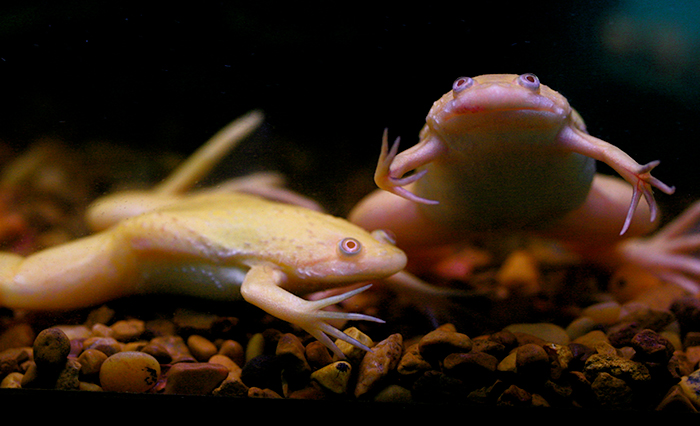The study focused on what factors regulate the size of a cells nucleus. On December 4 a paper about the study written by Assistant Professor in the Department of Molecular Biology Daniel Levy and Doctoral Student Predrag Jevtic was published in Current Biology, a notable publication among life scientists.
“My lab works on the nucleus and so we are really interested in how the size of the nucleus is controlled,” Levy said. “I think it’s a very interesting fundamental question in cell biology.”
The study was conducted using African Clawed Frogs’ embryos because of their size. Measuring about one millimeter in diameter, they can be seen without a microscope, which makes them useful for observing size regulation. Frog cells during division do not grow but divide during the cell cycle also making them ideal for the study.
“They go from one single millimeter sized cell to about 400 much smaller cells over six or seven hours,” Levy said.
After a frog embryo has divided 12 times, and there are about 4000 cells, a point in development occurs called the midbastula transition (MBT).
MBT is an essential stage of development because it primes the cell for later stages of growth. “The embryo starts to make a lot of new proteins that are really important for the later stages of development,” Levy said. “The other major thing that happens in this MBT is that the rate of cell division changes so the cell starts to divide more slowly and cells actually gain the ability to start to move.”
The study worked to on determine what factors affected the timing of MTB.
“What we found is that the size of the nucleus is important,” Levy said. “So if we change the size of the nucleus and the embryo we could change the timing of this MBT.”
A major draw for Levy was the potential relation to cancer research, “It turns out that in cancer cells the nuclei become inappropriately enlarged,” he said. “If we can understand what controls nuclear size we might be able to come up with new ways to treat cancers potentially. The study is really aimed at understanding what the importance of nuclear size is during development.”
Retired Professor in the U.W. Medical School Program WWAMI Robert George found the research to present a new perspective in cancer research.
“Since human cancer cells tend to have a larger nucleus in proportion to the size of the cell, than normal cells, it might be guessed that this increase in nuclear size tends to make the cancer cell divide more frequently than it should,” George said. “It is not proven that such an increase in nuclear size in cancer cells does increase the likelihood of division, but Levy’s study of frog embryos does make an interesting suggestion that it might.”
Levy plans for future research to be conducted off of the results of the study.
“Ultimately we would like to move this in to the cancer direction and so ask; if we change the size of the nucleus in a cancer cell do we change the growth properties of that cell?” Levy said. “In particular cancer cells have larger nuclei so if we make nuclei smaller in a cancer cell does that actually sort of help reduce the cancer like properties of that cell.”



